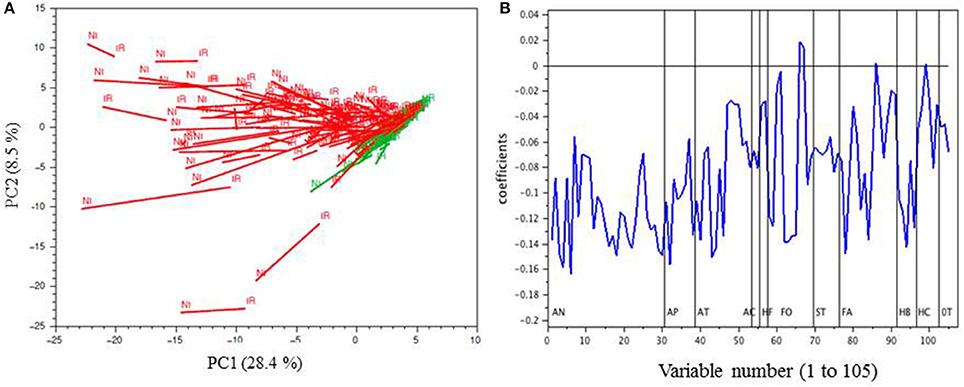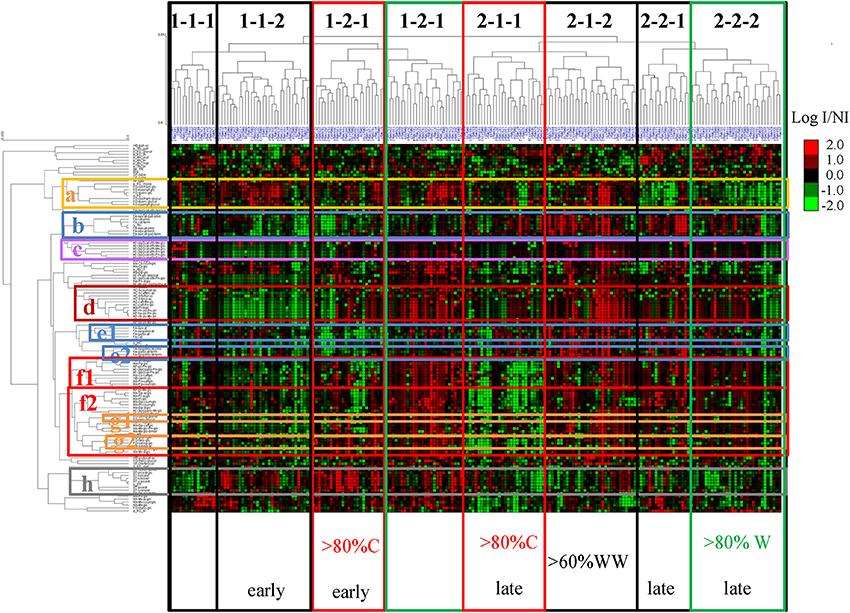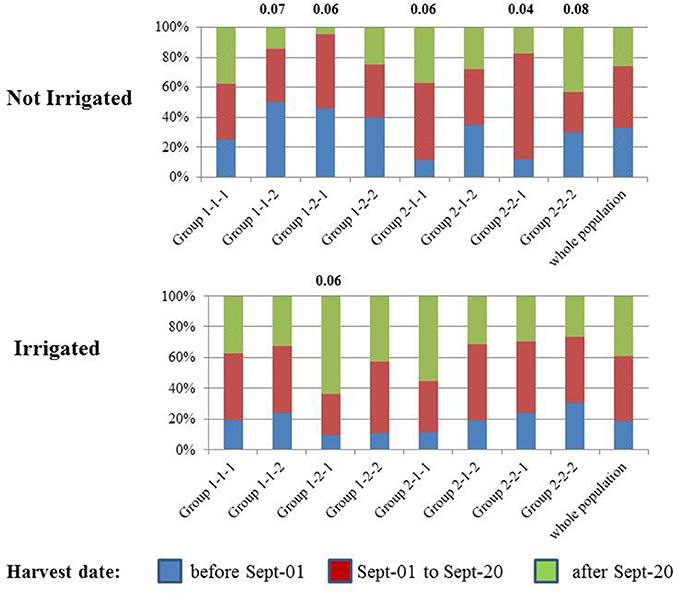What are Polyphenols?
Polyphenols encompass a diverse group of chemical compounds characterized by multiple phenol (aromatic alcohol) rings. They are widely distributed throughout the plant kingdom and exhibit various biological activities, including antioxidant, anti-inflammatory, and anticancer properties. Polyphenols can be categorized into several subclasses based on their chemical structures, including flavonoids, phenolic acids, stilbenes, lignans, and tannins.
Flavonoids, among the largest subclasses of polyphenols, consist of compounds like flavones, flavonols, flavanones, flavanols, anthocyanins, and isoflavones. Their vibrant colors contribute to the pigmentation of flowers, fruits, and vegetables. Flavonoids have been extensively researched for their potential health benefits, particularly their antioxidant and anti-inflammatory effects.
Phenolic acids constitute another essential subclass of polyphenols, further divided into hydroxybenzoic acids and hydroxycinnamic acids. Gallic acid, caffeic acid, and ferulic acid are common examples. These compounds are widely present in plant-based foods and have been linked to various health advantages, such as cardiovascular protection and anticancer properties.
Stilbenes, including resveratrol, have garnered significant attention due to their potential health-promoting effects. Resveratrol, found in grapes and red wine, has been associated with cardiovascular benefits and longevity.
Lignans, prevalent in seeds, whole grains, and legumes, are known for their estrogenic and antioxidant activities. Some lignans have been studied for their potential in preventing hormone-related cancers.
Tannins, found in various plant species, possess astringent properties. Traditionally used in the tanning process for animal hides, tannins are known for their protein-binding abilities. They are classified into hydrolyzable tannins and condensed tannins, each with distinct chemical structures and biological activities.
What Polyphenol Analysis Can Do?
Polyphenols have garnered significant interest for their potential health benefits and their role in plant defense mechanisms. Analyzing the composition and metabolism of polyphenols is vital for comprehending their biological functions and exploring applications in various domains.
Characterization of Plant Phenolic Profiles: Polyphenol analysis allows researchers to identify the specific types and concentrations of polyphenols present in a plant, which can help in plant breeding, variety selection, and the development of plant products with desired attributes.
Study of Bioavailability and Metabolism: Polyphenols undergo extensive metabolism in the human body, and their bioavailability is influenced by factors like food processing and gut microbiota. Analyzing polyphenols aids in understanding their absorption, distribution, metabolism, and excretion patterns, offering insights into potential health effects.
Exploration of Antioxidant and Anti-inflammatory Activities: The antioxidant and anti-inflammatory properties of polyphenols are well-known. Analyzing polyphenols allows researchers to delve into the mechanisms underlying these activities and their potential use in preventing diseases related to oxidative stress.
Discovery of Novel Polyphenols: Polyphenol analysis techniques facilitate the identification of new and undiscovered polyphenolic compounds in plants. Such discoveries contribute to expanding our understanding of plant biochemistry and potentially revealing novel bioactive compounds.
Polyphenols Analysis at Creative Proteomics
Targeted Polyphenol Profiling: Our service offers quantitative measurement of specific polyphenol classes or individual compounds in various samples. This data is valuable for research and product development purposes.
Untargeted Polyphenol Metabolomics: Utilizing cutting-edge mass spectrometry techniques, our untargeted metabolomics approach allows for comprehensive analysis of polyphenols in complex samples. This includes the identification and quantification of known compounds as well as potential novel discoveries.
Polyphenol Structure Elucidation: Our team of experts employs advanced spectroscopic techniques, such as nuclear magnetic resonance (NMR) spectroscopy and high-resolution mass spectrometry (HRMS), to elucidate the chemical structures of polyphenols. This provides detailed information on the structural characteristics of these compounds.
Bioavailability and Metabolism Studies: Through in-depth investigations using in vitro and in vivo samples, we analyze the bioavailability, distribution, metabolism, and excretion (ADME) profiles of polyphenols. This sheds light on their potential health effects.
Identification of Novel Polyphenols: Our advanced analytical techniques, combined with extensive metabolite databases, allow us to identify new and undiscovered polyphenolic compounds. By employing data mining and comparative analysis, we contribute to the expansion of knowledge in the field of polyphenol research.
Quantitative Analysis of Polyphenol-Related Biomarkers: Our service offers quantitative analysis of polyphenol-related biomarkers in various biological samples. This measurement helps assess the impact of polyphenol intake on human health and monitor the effectiveness of polyphenol-based interventions.
Polyphenol Metabolism Analysis Techniques
Polyphenol metabolism analysis relies on various mass spectrometry-based techniques, which offer high sensitivity, specificity, and versatility. Some of the commonly employed techniques include:
- Liquid Chromatography-Mass Spectrometry (LC-MS): LC-MS is a powerful technique that combines the separation capabilities of liquid chromatography with the detection and identification capabilities of mass spectrometry. It allows for the analysis of complex mixtures of polyphenols with high sensitivity and selectivity. Popular LC-MS instrument models used in polyphenol analysis include Agilent 1290 Infinity II LC System coupled with Agilent 6550 iFunnel Q-TOF LC/MS System.
- Gas Chromatography-Mass Spectrometry (GC-MS): GC-MS is another widely used technique for polyphenol analysis, particularly for volatile polyphenols. It involves the separation of polyphenols by gas chromatography followed by their detection and identification by mass spectrometry. Popular GC-MS instrument models used in polyphenol analysis include Thermo Scientific Trace 1310 GC System coupled with Thermo Scientific ISQ EC Single Quadrupole Mass Spectrometer.
 Workflow for Plant Metabolomics Service
Workflow for Plant Metabolomics Service
List of Polyphenols Analyzed (including but not limited to)
| Types |
Compounds |
| Flavonoids |
Quercetin, Kaempferol, Rutin, Catechins, Epicatechin, Apigenin, Luteolin, Naringenin, Hesperetin, Genistein, Isorhamnetin, Myricetin, Morin, Fisetin, Diosmetin, Tangeretin, Luteoloside, Hesperidin, Eriodictyol, Pelargonidin, Cyanidin, Delphinidin, Malvidin, Peonidin, Petunidin, Chrysin. |
| Phenolic Acids |
Gallic acid, Caffeic acid, Ferulic acid, Chlorogenic acid, Vanillic acid, Syringic acid, p-Coumaric acid, Protocatechuic acid, Ellagic acid, Sinapic acid, Rosmarinic acid, Salicylic acid, Benzoic acid, Gentisic acid, Homovanillic acid, p-Hydroxybenzoic acid, Vanillin, Isovanillin, Homovanillin, Ellagic acid derivatives. |
| Stilbenes |
Resveratrol, Piceatannol, Pterostilbene, Viniferin, Epsilon-viniferin, Trans-Resveratrol 4'-O-D-Glucuronide, Piceid, Isorhapontin, Pinosylvin. |
| Lignans |
Secoisolariciresinol, Enterodiol, Matairesinol, Lignan A, Dihydromatairesinol, Lariciresinol, Isolariciresinol, Hydroxymatairesinol, Syringaresinol, Medioresinol. |
| Tannins |
Ellagitannins, Condensed tannins, Hydrolyzable tannins, Catechins, Proanthocyanidins, Theaflavins, Thearubigins, Procyanidins, Gallocatechins. |
Why Choose Us?
- Detection platform: Untargeted metabolome + targeted metabolome detection technology for metabolite detection, taking into account both qualitative and quantitative accuracy.
- Comprehensive database: Self-built plant species-specific metabolite database. The database material reached 6000+.
- Substance richness: Full coverage of flavonoids, phenolic acids, tannins and other substance types.
- Stable detection: 6 quality controls to provide high quality data.
Sample Requirements for Polyphenols Metabolism Assay
| Sample Types |
Minimum Sample Size |
Biological Repeat |
| Plant Samples |
Stem, bud, node, leaf, flower, fruit, root, healing tissue |
600mg |
3-6 |
| Liquid Samples |
Root secretions |
10mL |
| Fermentation fluid, wine, tissue fluid, fruit juice |
5mL |
| Honey, nectar, oil, extracts |
500uL |
| Specialty Samples |
Cultured samples, presence of liquids |
600mg |
Case 1. Comprehensive Analysis of Polyphenols in Grape Berry Skins: Cultivar Differences and Environmental Influences
Background:
The analysis of polyphenols is a crucial aspect of studying the composition of grape berry skins. Polyphenols are a diverse group of compounds that play important roles in the flavor, color, and health benefits of grapes and their derived products. Understanding the polyphenol composition can provide insights into the genetic and environmental factors that influence grape quality and the potential health benefits associated with grape consumption.
Sample:
The study utilized grape berry skins as the primary sample for polyphenol analysis. Berry skins are rich in polyphenols and serve as a key source for studying their composition. The skins were collected from a diversity panel, which included different grape cultivars with variations in genetic backgrounds and characteristics.
Technical Platform and Procedure:
Extraction and Sample Preparation for Polyphenol Analysis:
Extraction: Grape berry skins were ground with liquid nitrogen, and a portion of the powder was weighed. Methanol was added followed by acetone/H2O with trifluoroacetic acid. The mixture was crushed using Precellys, and the supernatant was obtained through centrifugation. The supernatant was dried with Genevac.
Sample Preparation: Methanol/H2O with formic acid was added to the dried solid, and the solution was solubilized using an Ultrasonic Cleaner. After centrifugation, dilutions were prepared, and pure and diluted samples were injected for UHPLC-QqQ-MS analysis.
Phloroglucinolysis: The solid obtained after evaporation was subjected to the phloroglucinolysis reaction, following a specific procedure.
Instrumentation:
Acquity UPLC system: It included a binary pump, a cooled autosampler, a diode array detection (DAD), and controlled by MassLynx software.
Triple quadrupole (QqQ) TQD mass spectrometer: Hyphenated with the UPLC system and controlled by MassLynx software.
Chromatographic Conditions:
Column: Reversed-phase Acquity HSS T3 1.8 μm 1.0 × 100 mm maintained at 40°C.
Mobile Phase: Formic acid in deionized water (solvent A) and formic acid in methanol (solvent B).
Flow Rate: 0.170 mL/min.
Injection Volume: 1 μL.
UPLC Analysis:
Polyphenol Composition: The chromatographic conditions included different gradient segments with varying solvent compositions. The column was brought back to initial conditions and re-equilibrated at the end of the sequence.
Tannin Units after Phloroglucinolysis: The chromatographic conditions involved different gradient segments with varying solvent compositions. The column was brought back to initial conditions and re-equilibrated at the end of the sequence.
Mass Spectrometry Conditions:
Operated in MRM mode with electrospray ionization (ESI) in positive or negative ionization mode.
Source and desolvation temperatures were set, and nitrogen was used as desolvation and cone gas.
Argon was used as collision gas, and capillary voltage was adjusted accordingly.
Results
The results of the polyphenol analysis provided valuable insights into the composition and diversity of polyphenols in grape berry skins. The major polyphenol families identified in the samples included flavan-3-ols, anthocyanins, flavonols, hydroxycinnamic acids, stilbenes, and smaller amounts of dihydroflavonols and benzoic acids.
The study revealed significant variations in the concentrations of polyphenols across the diversity panel, indicating cultivar differences in polyphenol profiles. For example, anthocyanin contents enabled the distinction between white, pink, and red cultivars, with red cultivars specifically characterized by the presence of flavonols derived from myricetin, laricitrin, and syringetin glycosides.
Furthermore, the study highlighted the influence of environmental factors on polyphenol composition. Environmental conditions, such as sunlight exposure, were found to affect the concentrations of certain polyphenols, such as quercetin glycosides. Water deficit conditions also impacted polyphenol biosynthesis, with not-irrigated berries exhibiting higher levels of most phenolic compounds compared to irrigated berries.
Overall, the polyphenol analysis provided a comprehensive understanding of the composition, cultivar differences, and environmental influences on polyphenols in grape berry skins. These findings contribute to the knowledge of grape biology, flavor development, and potential health benefits associated with grape consumption.
 PCA of the MRM phenolic composition data
PCA of the MRM phenolic composition data
 Unsupervised hierarchical clustering of metabolites and cultivars affected by drought
Unsupervised hierarchical clustering of metabolites and cultivars affected by drought
 Histogram of the distribution of harvest dates
Histogram of the distribution of harvest dates
Reference
- Pinasseau, Lucie, et al. "Cultivar diversity of grape skin polyphenol composition and changes in response to drought investigated by LC-MS based metabolomics." Frontiers in plant science 8 (2017): 1826.


 Workflow for Plant Metabolomics Service
Workflow for Plant Metabolomics Service PCA of the MRM phenolic composition data
PCA of the MRM phenolic composition data Unsupervised hierarchical clustering of metabolites and cultivars affected by drought
Unsupervised hierarchical clustering of metabolites and cultivars affected by drought Histogram of the distribution of harvest dates
Histogram of the distribution of harvest dates

